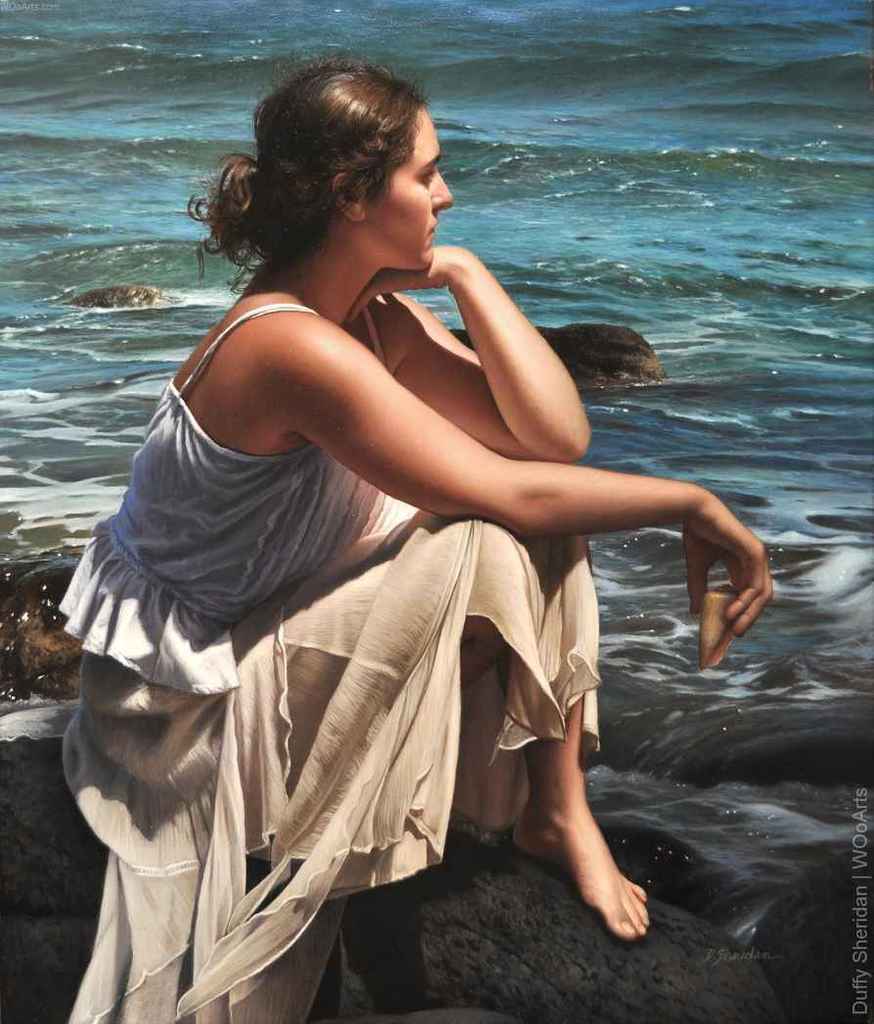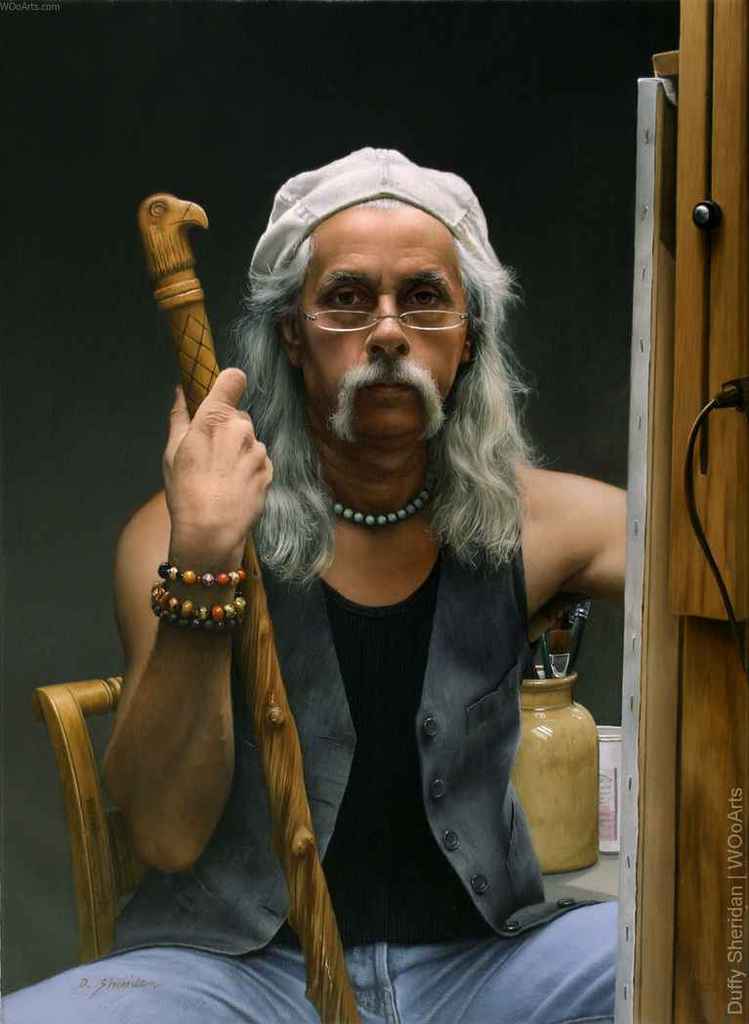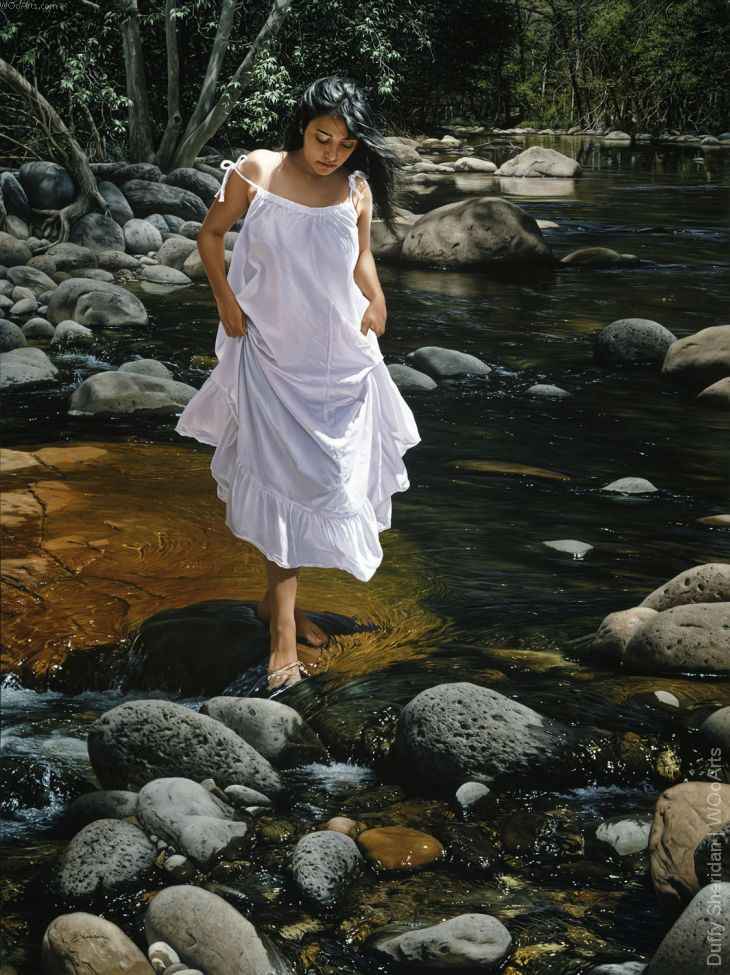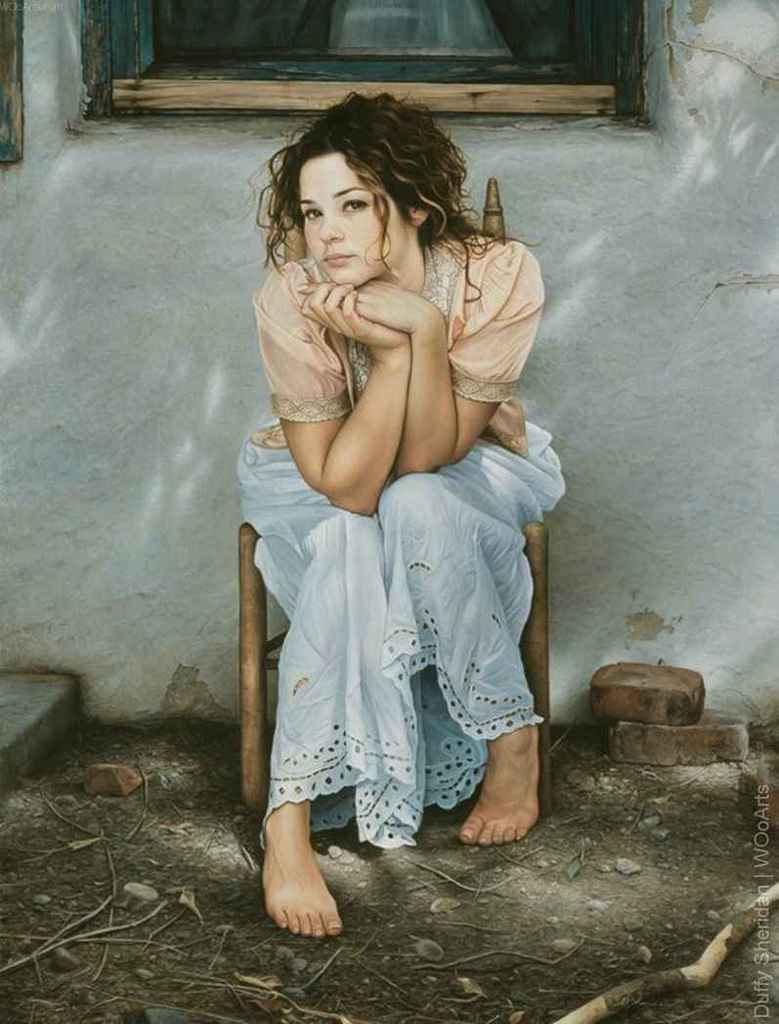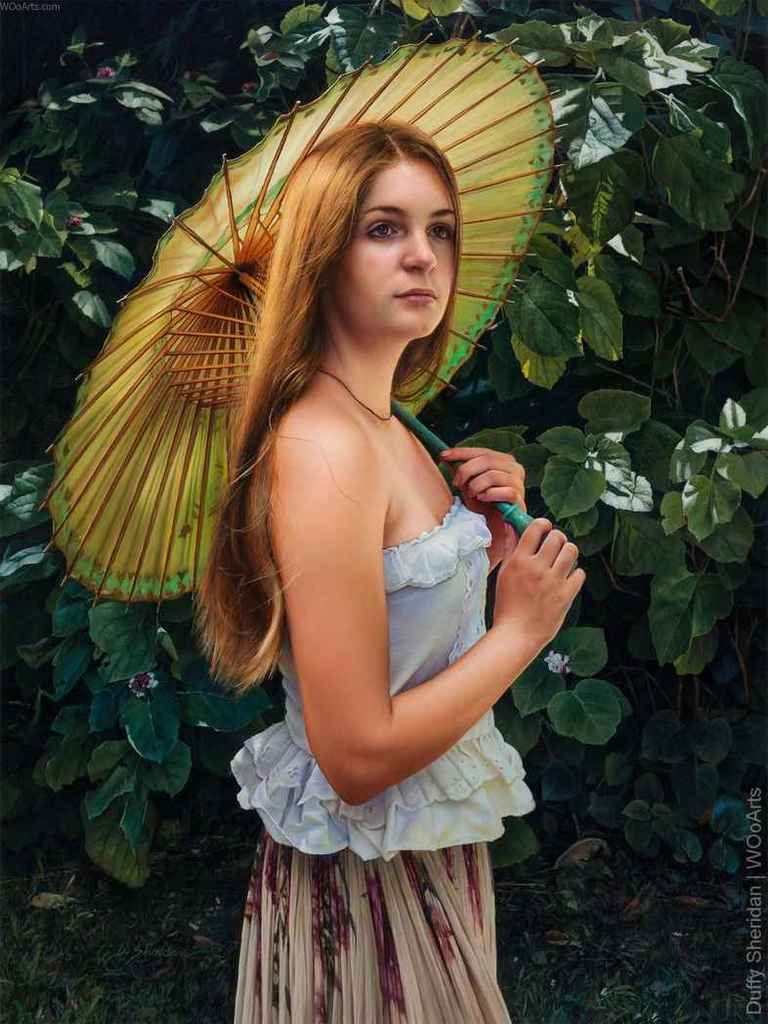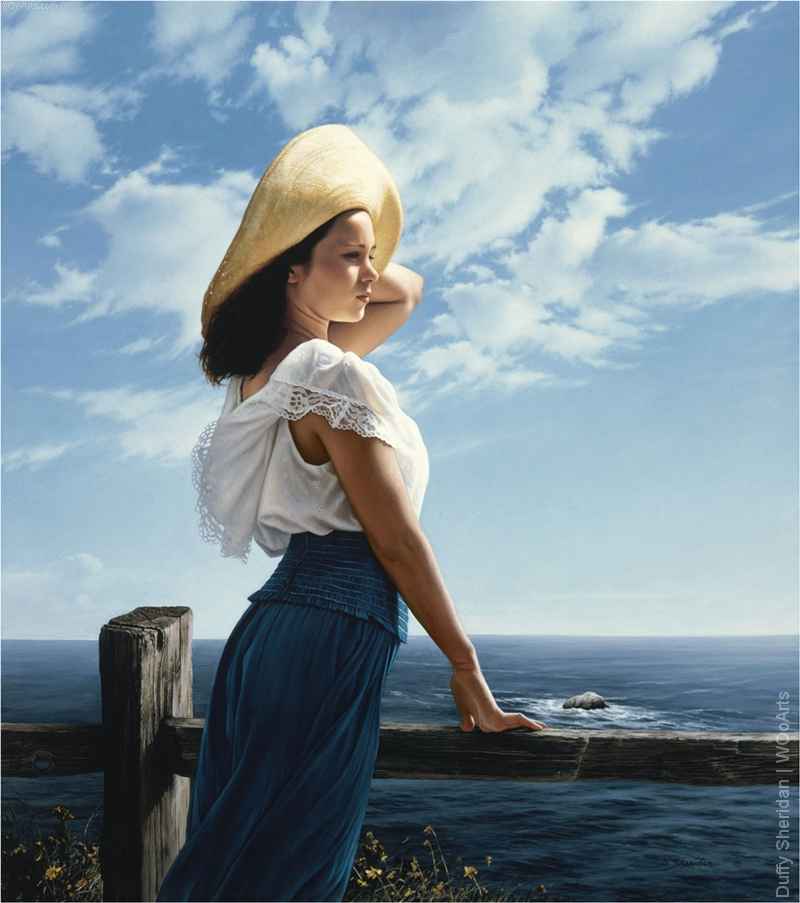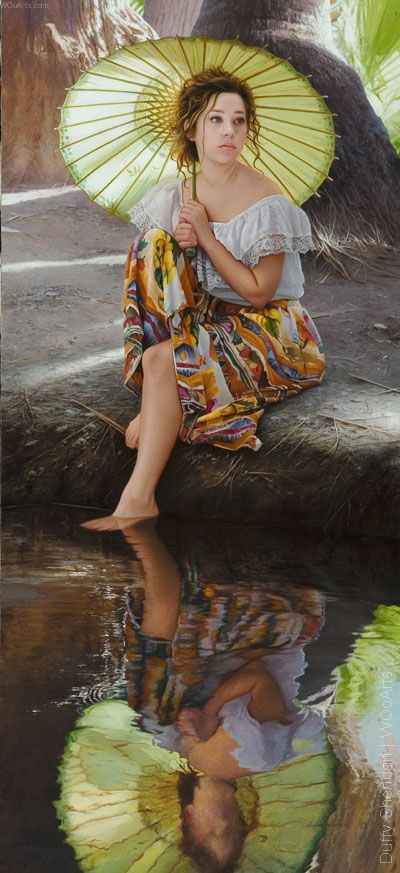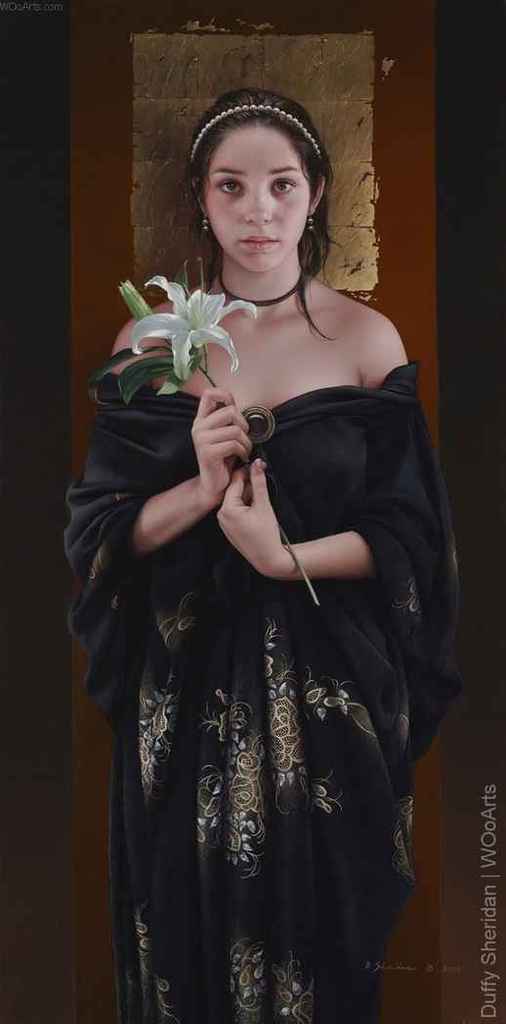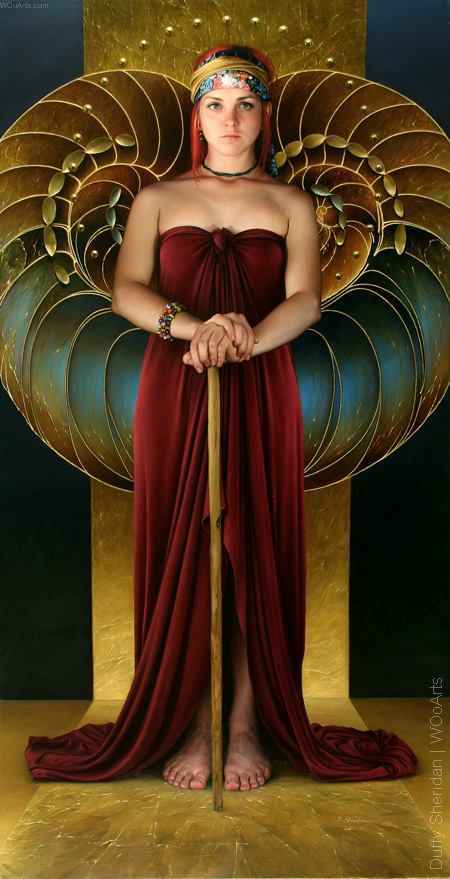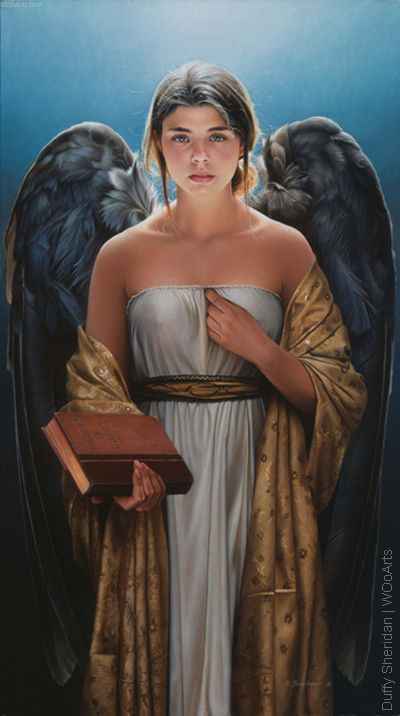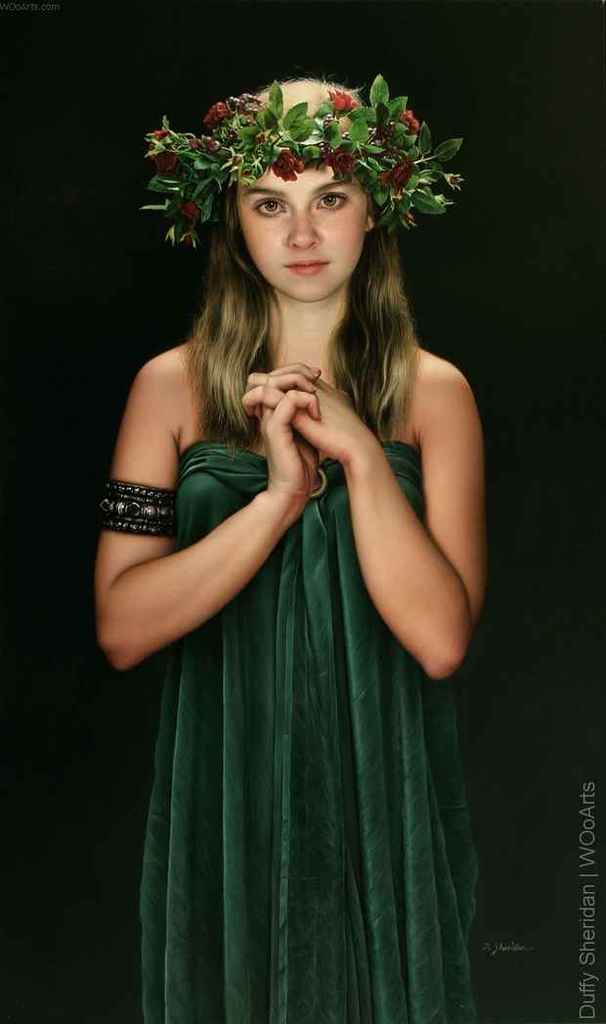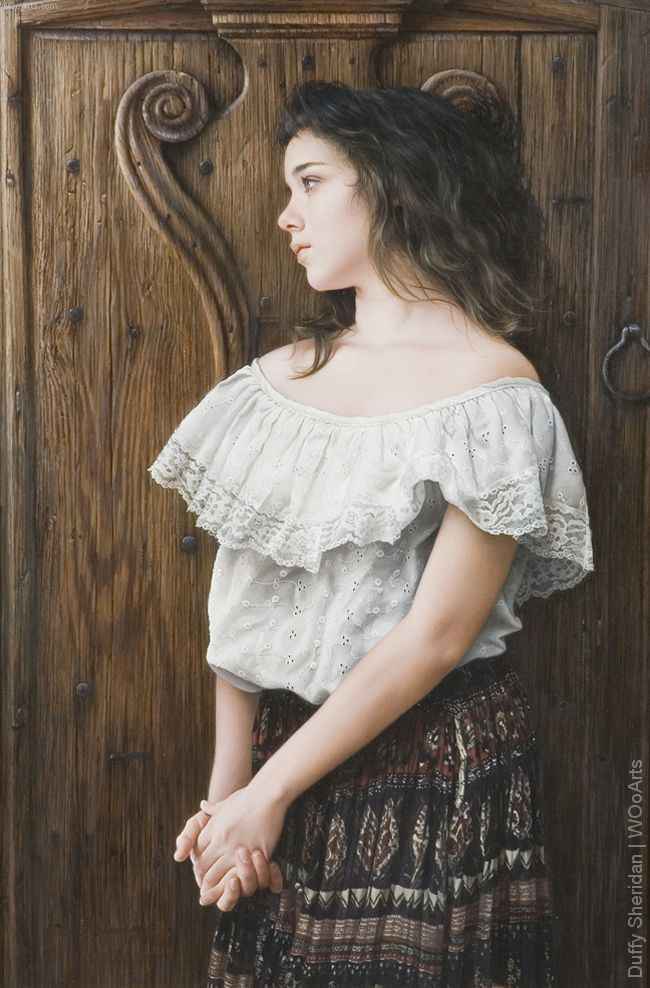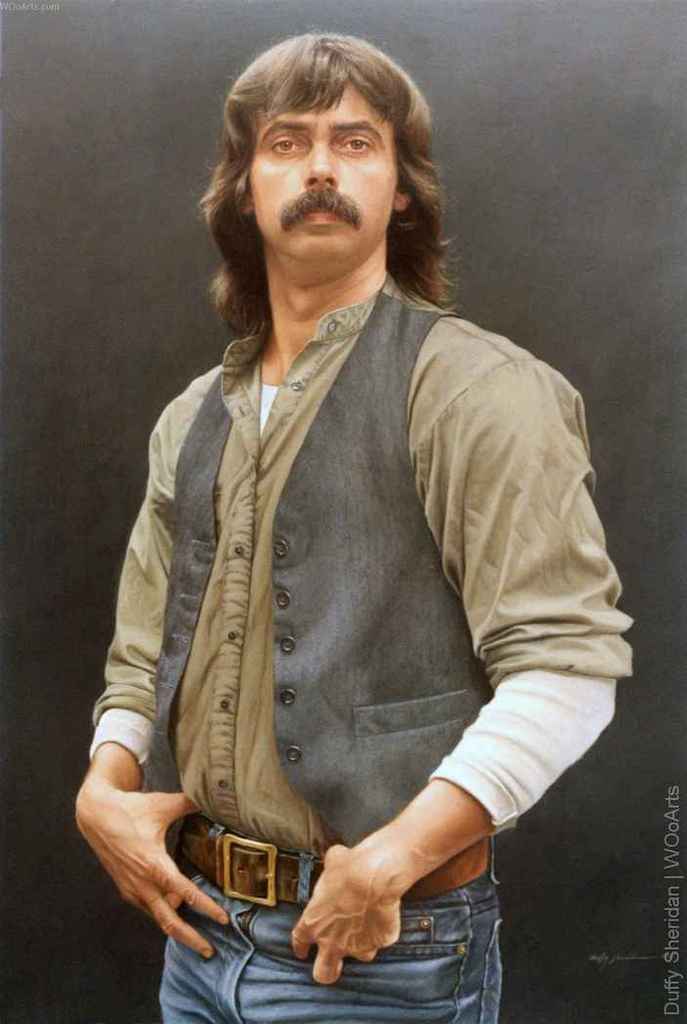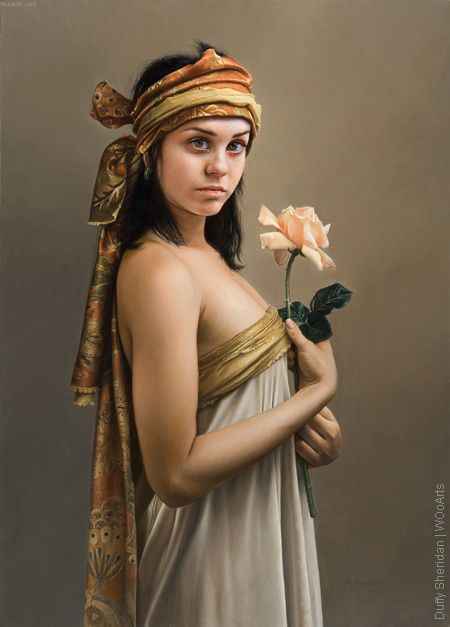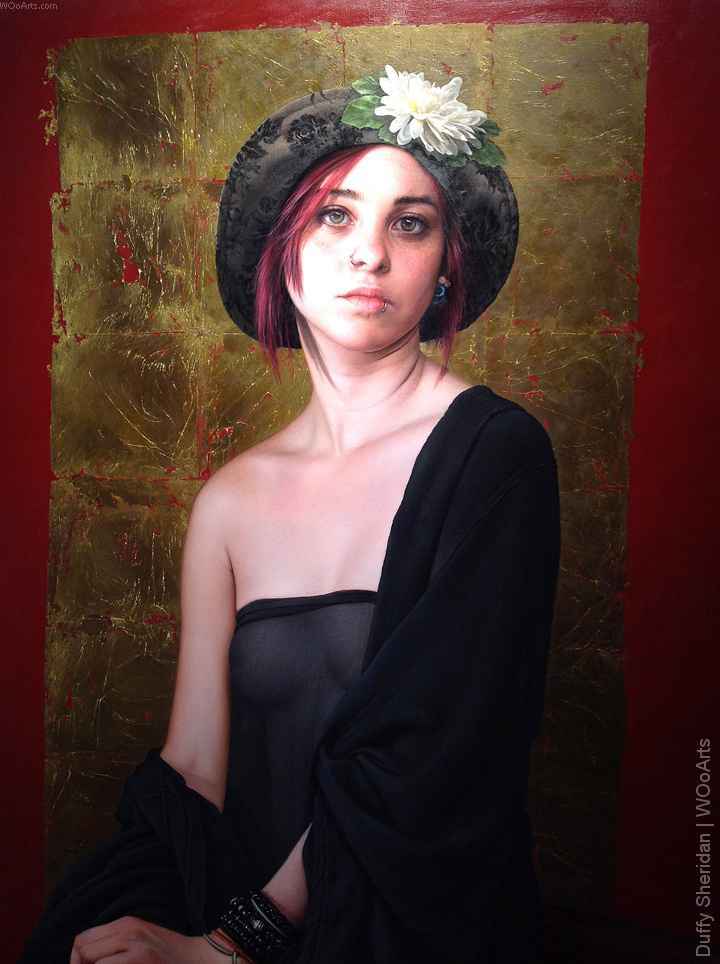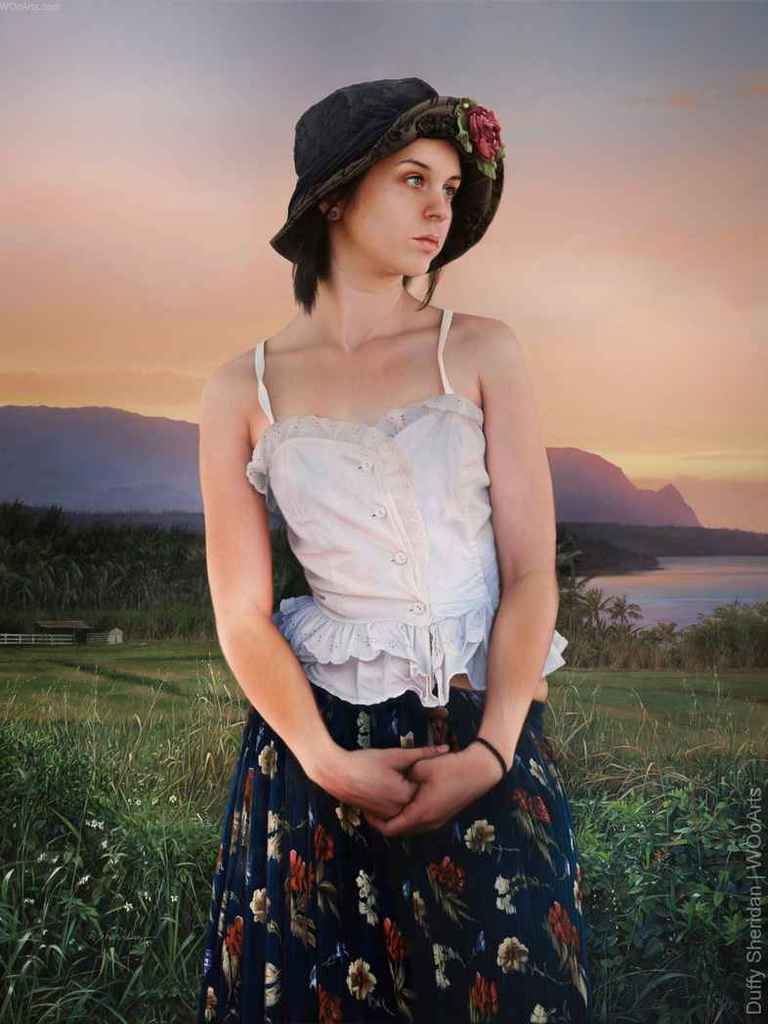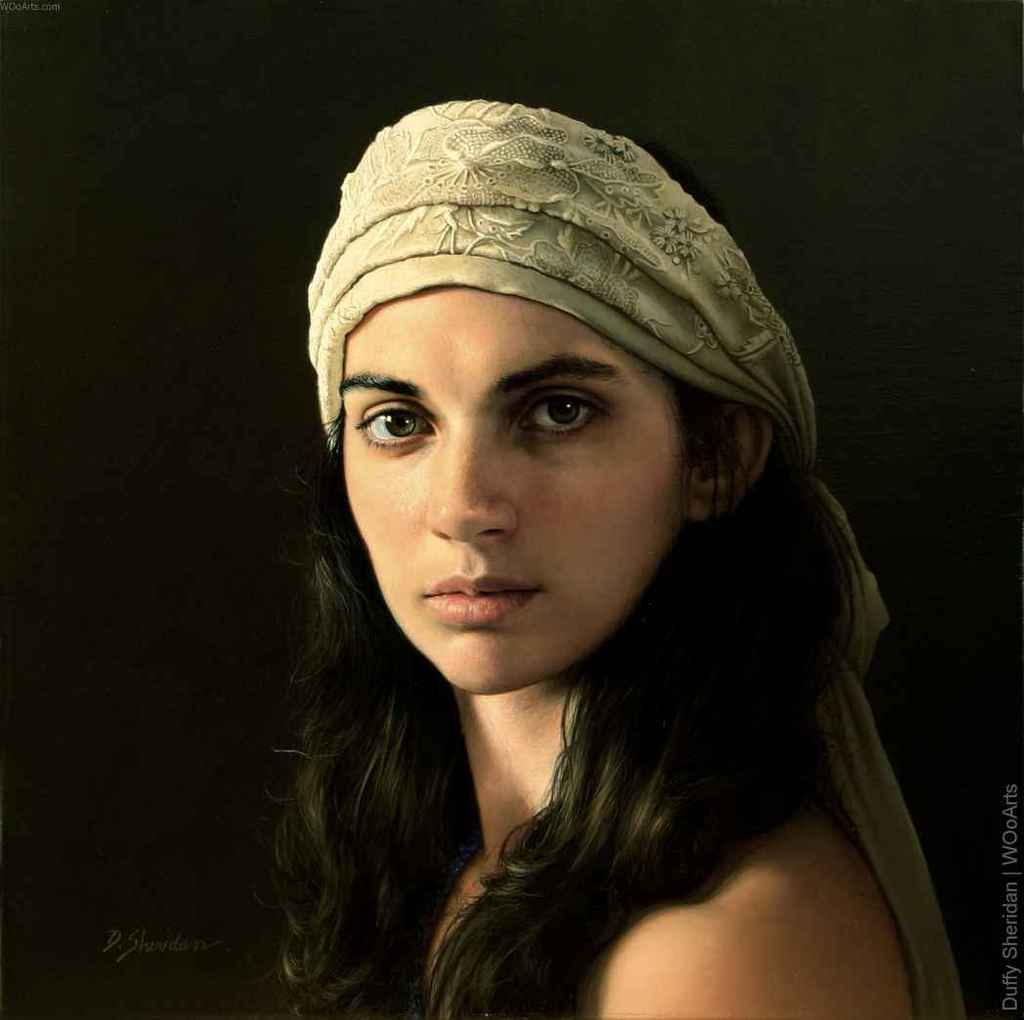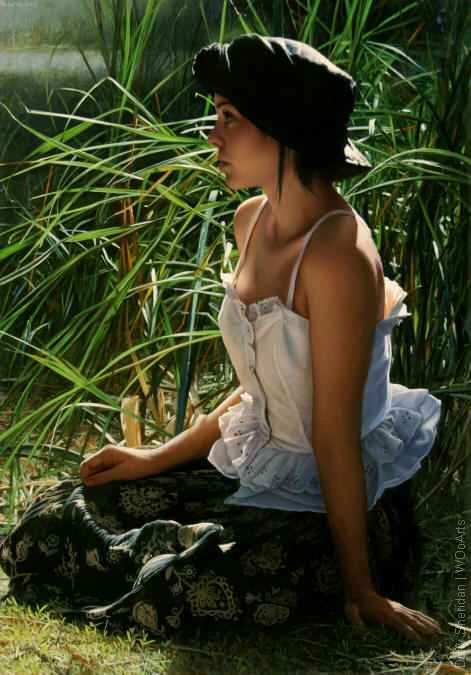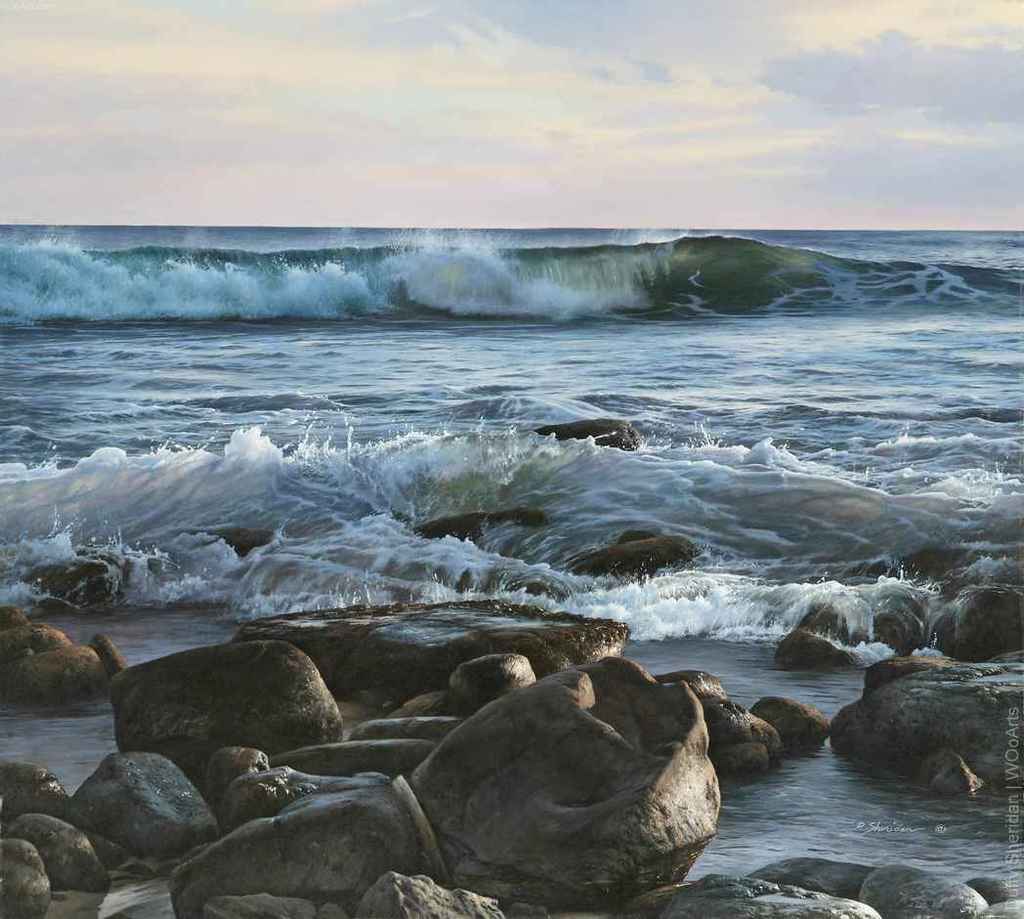About Artist Duffy Sheridan and His Painting Techniques
Duffy Sheridan, American painter, has been painting since he was a child. His father, also an artist, encouraged him to learn to paint anything and everything. He has traveled the world and dedicated his artistic life to the discovery and expression of beauty as he sees it.
Although he and his family spent many years in relative seclusion in the far corners of the world, Sheridan’s work has attracted the attention of collectors on five continents. Since returning to the United States in 1991, his work has received international acclaim and he has been designated a Living Master™ by the Art Renewal Center.
His paintings can be found in prestigious institutions from a Cathedral in the South Pacific to the US Air Force Academy to corporate headquarters in Manhattan, as well as in the private residences of kings, judges, bishops, doctors and collectors all over the world.
Influence and Experience
For over 35 years the teachings of the Baha’i Faith have been the primary influence of Sheridan’s life and work and have dominated his continual search for that balance of craftsmanship and artistic expression which has the ability to elevate, in some small way, the human condition.
Sheridan feels that he is in the process of learning to appreciate the richness of humankind and has come to believe that the purpose of his work should be “to magnify the dignity and nobility of the human spirit and the singular beauty of all things. When people look at one of my paintings, I’d like them to see that humans, indeed, are noble beings.”
Over the years, I have received many inquiries about my process and techniques. I think the easiest and most effective way to show this is to do a demonstration of my style using video segments on YouTube. You can view this online demonstration.
Questions and Answers
As you know, I was a self-taught painter due to the fact that I lived in remote places and had to discover my own way. If I had it to do over again, I probably would have gone to an art school. It certainly would have saved me time spent experimenting. That said, I get many questions about my painting process, which I will answer here. I am not saying this is the “right” way to do it, it’s just the way I have developed for myself over 40 years. I am happy to share it with you here.
Materials and supplies
Jan from Arizona wrote: I was introduced to your work in a Scottsdale Gallery. The piece I saw, Marieke with Red Scarf, was stunning to say the least. Quick question: What brand of oils & brushes do you feel are most conducive to doing realistic oil painting? What linen do you use? I have been producing art for 45 year myself and want to get back to doing some painting. Thanks for any suggestions you can offer.
Duffy Replied: I stretch my own canvases and prefer to use heavy-duty stretcher bars and double oil primed Claussens Fine Portrait Linen to which I add one coat of Windsor and Newton Oil Painting Primer.
I use Windsor and Newton Artist Oils with one or two specific colors in other brands. I will post my palette when I begin the video class.
Over the years, I have developed my own particular stroke (the way I brush the paint onto the canvas) so I have found brushes that accommodate my particular stroke. It is sort of a cross-hatching stroke and I often think of my painting style as one of drawing with color as opposed to a more “painterly” application. My brushes are all soft hair brushes; SILVER Ruby Satin Series 2500 Round Synthetic Brush (long handled) size 1. These are inexpensive, keep a good point for a few days and are easy to draw with. WINSOR & NEWTON Series 7 Kolinsky Sable Water Colour Brushes size 1 – there is just no better brush in the world if you want to have control your medium. In addition I use a number of different small to medium flats and brights. I use paper palettes because I don’t like a mess, and mix a new one every day, sometimes twice a day if the paint begins to dry out.
Thoughts on the purpose of Art
Courtney P wrote: I know you do not know me at all, but I’m an art student in the United States. I was starting to feel depressed looking through my art history book, it seemed that all of the beauty and tremendous skill of the renaissance painters had been lost or forgotten.
All that modern artists seem to do is splatter paint on twisted paperclips and smear piles of eraser dust on wooden tables. I decided to research some modern realists and came across your work. Oh, if words could describe my joy and relief. Thank you for re-inspiring me to follow my dreams and take up the arduous task of one day reaching skill rival to your own. Thank you for showing me that true art is not lost in this world.
Duffy replied: Thank you for your kind words. I can empathize with your feelings – when I started painting seriously in the 60s, it was the era of Pop Art and Abstract schools predominated.
Indeed, I was very fortunate to be able to spend a number of years living overseas in relative seclusion away from “paper clips and eraser dust”, which gave me time to formulate my style and follow my heart in its expression. Luckily, I had friends in the US who sent me cut outs of great paintings, which I tacked to my easel to keep high standards in front of me to strive to constantly improve.
It is a difficult time in so many ways to understand our purpose as artists. But I have come to believe that our responsibility is to attempt, in some meager way, to bring hope through beauty to a despondent humanity. I feel our call is to inspire others by what inspires us as individual artists. I believe people want to be uplifted.
At this time when our culture has become so accustomed to Shock Art in so many genre – movies, video games, television, reality shows as well as painting, it is even more important to me to offer alternatives and appeal to our spiritual nature, which recognizes beauty.
Lighting and Portrait Palette
Mark Z wrote: Thank you for your web site and your offer to help us who wish to know more about your process. I am a new 53 year old painter having finished my formal training at the Kewaunee Academy of Fine Art one year ago. Without conscious decision I find myself drawn to the human figure as a means of artistic expression. I would like to know more about your process in general but specifically how you achieve your meticulous flesh tones and how you light your models. The video of your studio does not show a large north light window yet the lighting on your models is very soft. Thanks for you time.
Duffy replied: You asked about skin tones on my portraits. You are right – it is a meticulous process. Over the years I have developed my skin tone pallet that consists of titanium white, flesh tint, Naples yellow, raw sienna, burnt umber, cadmium red, permanent rose, viridian, French ultramarine. Generally, I use Windsor and Newton Artist Oils. Sure, I do not follow classical procedure, but paint solely with turpentine as a medium until the very end of the painting. I paint layer over layer of accurate skin color; the layering gives body to the surface of the canvas. The most important thing about producing good skin tones is for the artist to pay very close attention to colors that actually exist.
What I have decided to do over a period of time is to produce a painting and videos on my website as it progresses so that viewers can see how I do it.
As to the lighting; I am a studio painter and I work in a windowless environment, which I control with artificial light. I need to have the light consistent so that I can work day and night. My models are also lit artificially.
I hope this helps a little bit. If not, let me know.
More on Lighting and Backgrounds
Mark W. of Arizona wrote: A couple questions. One of my biggest problems is deciding what to do with the background. How do you decide and what criteria do you use, (a detailed landscape vs. a muted background)?
I have now relocated my studio to my home and I was wondering what kind of lighting you use?
Duffy replied: As to your question, Mark, unless it’s planned to have just a plain background, meaning a solid color of some kind, I always plan the setting of the painting and the lighting before I begin. Then I set up as many of the props as I can and keep them in the studio until I am finished. What I cannot set up, I will take detailed photos of.
As you know, I paint day and night, so need constant lighting. I have four fluorescent bulbs in two shop lites over my easel… two cool white bulbs, one warm light and one synthetic daylight. These are chosen because they closely match the gallery lighting where the finished painting will be shown.
Mark Z wrote: Duffy, Thank you so much for taking the time to respond to my questions. I have one follow up question about your lighting, if I may; How do you get such soft transitions with your artificial lighting? What I’ve observed in your paintings appears to be a very cool light. I’ve also noticed, in the highlights in the eyes, that there appears to be at least two light sources. What is your light source? If fluorescent, what wattage and color temperature do you use? I appreciate what you are trying to do for painters such as myself. I very much enjoyed your web site and will follow up often looking for your next video update.
Duffy replied: Regarding your questions about my studio lighting, please see the reply to Mark W above who asked the same question. On the models, I will place at least one auxiliary light, but when transitioning the lighting to the painting, I will exaggerate the effects of the lighting as I see fit.
Vintage Photos
Sharon wrote: Your work is beautiful and I visit your website often to see what’s new. I am an amateur artist. I’ve always had this problem that I would like to have resolved for me if possible. I have vintage photos that I would like to use as a references, but they are so small and when I try to enlarge them, they become blurry and I lose all of the detail. Do you know of anyway to enlarge old photos without losing clarity.
Duffy replied: I try to work as much from life as I can. When I need to use photographs, I shoot my own on the highest resolution. Years ago after doing a few commissions from vintage photos, I realized that this is not going to work for me so I stay away from such work. Jeanne suggests that rather than enlarging them on a photocopier, you might try scanning them at a very high resolution jpg, and print a photo from that, which will help some.
Finishing Paintings
Georgia wrote: LOVE the blk and white self-portrait on your home page….fantastic! I don’t even know where to begin “question wise” …still finding my way, and I learn so much from looking at others works….yours is beautiful! I’m a realist painter as well, and find myself obsessing, and re-painting…find it hard to move on. I feel most of the time as though i’ve learned something…but, I must get past this! Any suggestions?
Duffy replied: The photo on the home page is a black and white photo of a color painting, which I am just now finishing. Glad you like it. As to re-painting pictures, the best advice I can suggest is to make sure your original drawings on the canvas and your turpentine build up are absolutely accurate. It is much easier to alter a painting in the beginning than it is at the end. If you build the painting accurately from the beginning, it is much easier to see and feel when you can’t go any farther.
Fixative on Charcoal Drawing
Wim from The Netherlands wrote: Thank you Mr. Sheridan for your beautiful work and your putting up the video’s for us to watch and learn from. I’m also happy to be able to connect to you on a more philosophical or spiritual level. Art can have a great impact on people’s souls, so it’s good to meet a painter who’s at least aware of that and doing something positive with it. I very much like those virtue series you are doing, some of them are really great…
Aside from compliments I have a question; in the video’s there is no mention of fixating the charcoal drawing. I suppose you do but would like to know how.
Duffy replied: Thank you for your kind words. I agree with you that art in all its forms has the potential to inspire. And for me, the real value of art is that ability. So I try only to produce art that in some way moves me in the hopes that perhaps it will have a similar effect on its viewer. It doesn’t always work, but that is always what I try for.
To answer your question, no I do not fix the charcoal at all. It is only on the canvas briefly as a guide for me. I don’t want any remnants of charcoal lines interfering with the next paint layer. When I begin “drawing” with the oil paints, the charcoal washed away in the process.
Gallery
